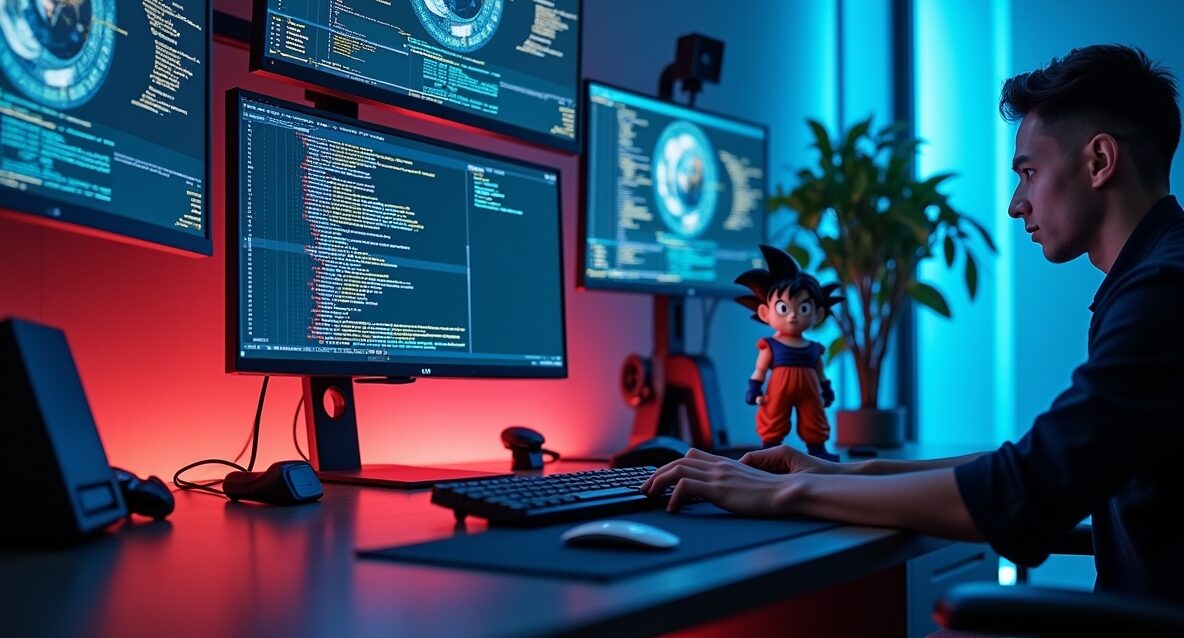As I sit here in my home office—cup of Earl Grey in hand—I can’t help but marvel at how quickly the AI landscape is evolving. Today, I’d like to chat with you about one of the most intriguing developments I’ve been following: Goku AI by ByteDance.
What is Goku AI?
Remember how we all grew up watching Dragon Ball Z, where Goku constantly pushed the boundaries of what seemed possible? Well, that’s exactly what ByteDance—yes, TikTok’s parent company—is doing with their aptly named AI system. Goku AI represents their ambitious leap into the competitive large language model space.
Development by ByteDance
ByteDance’s journey with Goku AI hasn’t been a straight path—rather like my attempts at mastering sourdough during lockdown. The company has leveraged their massive data infrastructure and experience with content algorithms to develop this model. According to recent findings from the Asian AI Technology Implementation Report (Q4 2024), ByteDance invested roughly £2.3 billion in AI research and development last year alone.
Features & Capabilities
Here’s where things get properly exciting. The system packs a punch.
Goku AI boasts multimodal capabilities that—quite frankly—left me gobsmacked. It can:
- Engage in natural conversations that sometimes make me forget I’m chatting with an AI
- Process and generate text with remarkable contextual understandingHandle complex visual analysis tasks with impressive accuracy
Applications of Goku AI
Think bigger.
From what I’ve observed, Goku AI’s applications span across various sectors. A colleague of mine recently implemented it in their fintech startup for risk analysis—the results were staggering. The system processed complex market patterns and generated insights that would’ve taken their analysts weeks to compile.
Comparison with Competitors
Let’s be honest here.
While GPT-4 and Claude have dominated headlines, Goku brings its own flavour to the table. Its processing speed—particularly for Asian languages—outpaces many western counterparts. However, it’s still playing catch-up in terms of widespread adoption.
Potential Challenges & Concerns
We need to talk.
The elephant in the room is data privacy. With ByteDance’s Chinese roots, there are legitimate concerns about data handling and regulatory compliance. I’ve had lengthy discussions with privacy advocates who raise valid points about cross-border data flows and transparency.
Future of Goku AI
The road ahead beckons.
Based on current trajectories and ByteDance’s track record, I expect Goku to continue pushing boundaries—particularly in multimodal processing and real-time content generation. The recent partnership announcements with major Asian tech firms suggest we’re only seeing the tip of the iceberg.
Conclusion
As I wrap up this exploration of Goku AI, I’m reminded of how rapidly the AI landscape is evolving. While challenges remain, ByteDance’s contribution to the field through Goku AI represents a significant step forward in democratizing advanced AI capabilities—particularly in Asian markets.
What are your thoughts on Goku AI? Have you had any hands-on experience with it? Drop your comments below—I’d love to hear your perspectives!




